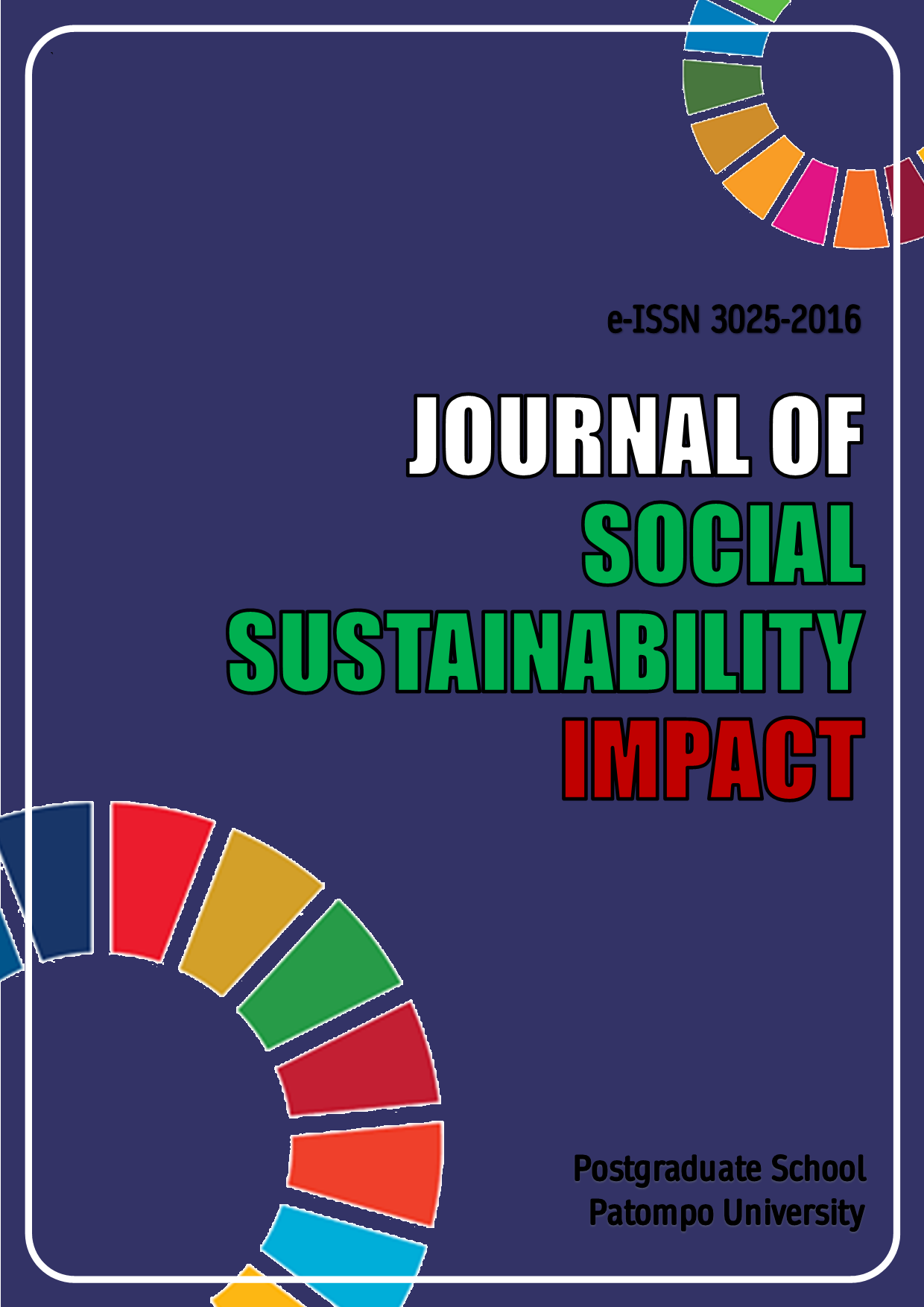Transformation of Economics Learning in High Schools with Problem Based Learning Modules
Keywords:
academic performance, motivates, educational quality, Problem-Based LearningAbstract
Developing learning modules as teaching materials involves four stages: Definition, Design, Development, and Dissemination. Well-structured materials are crucial for supporting and enhancing student motivation to master subjects. Common teaching problems, curriculum, and student needs are analyzed in the Definition stage. The Design stage includes creating a structured economics module for management topics. The Development stage involves expert validation and trials in small and regular class settings. The Evaluation stage assesses the module's effectiveness. Validated by four experts, the module scored an overall average of 4.42, which was deemed valid. Experts rated presentation feasibility at 4.60, graphical feasibility at 4.22, and content and language feasibility at 4.50 and 4.36, respectively. Student field trial assessments showed scores of 4.41 for presentation, 4.61 for graphics, 4.50 for content, and 4.53 for language. The module significantly increased student motivation and reduced boredom, with high engagement in class activities. Observations showed active student participation, attendance, and cooperation. Implementing the module resulted in significant performance improvements, with 83.33% of students scoring between 85-100 and 86.11% achieving mastery, surpassing the 85% success criteria. The economics learning module effectively enhances student motivation and academic success through its comprehensive design and validation process, ensuring quality and suitability for educational purposes.
References
Anderson, L. W., & Planning, I. I. for E. (1991). Increasing teacher effectiveness. Unesco Paris.
Barkley, E. F., & Major, C. H. (2020). Student engagement techniques: A handbook for college faculty. John Wiley & Sons.
Barrows, H. S., & Tamblyn, R. M. (1979). Problem-based learning in health sciences education. US Department of Health, Education, and Welfare, Public Health Service.
Bloom, B. S., Krathwohl, D. R., & Masia, B. B. (1984). Bloom taxonomy of educational objectives. In Allyn and Bacon. Pearson Education London.
Blumenfeld, P. C., Kempler, T. M., & Krajcik, J. S. (2006). Motivation and cognitive engagement in learning environments. na.
Brophy, J. (2004). Motivating students to learn. Routledge.
Darling-Hammond, L. (1997). School reform at the crossroads: Confronting the central issues of teaching. Educational Policy, 11(2), 151–166.
Gagné, François. (2005). From gifts to talents. Conceptions of Giftedness, 2, 98–119.
Gagné, Francoys. (1985). Giftedness and talent: Reexamining a reexamination of the definitions. Gifted Child Quarterly, 29(3), 103–112.
Gandhi, S., & Dass, D. P. (2019). A study to evaluate the effectiveness of problem based learning (PBL) module on knowledge and attitude among nursing students. International Journal of Nursing Education, 11(3), 101–106.
Goertz, M. E. (2007). Standards-based reform: Lessons from the past, directions for the future. Conference on the Uses of History to Inform and Improve Education Policy.
Heong, Y. M., Hamdan, N., Ching, K. B., Kiong, T. T., & Azid, N. (2020). Development of integrated creative and critical thinking module in problem-based learning to solve problems. International Journal of Scientific and Technology Research, 9(3), 6567–6571.
Hmelo-Silver, C. E. (2004). Problem-based learning: What and how do students learn? Educational Psychology Review, 16, 235–266.
Hung, W., Jonassen, D. H., & Liu, R. (2008). Problem-based learning. In Handbook of research on educational communications and technology (pp. 485–506). Routledge.
Hunt, G. H., Wiseman, D. G., & Touzel, T. J. (2009). Effective teaching: preparation and implementation. Charles C Thomas Publisher.
Idkhan, A. M., & Idris, M. M. (2021). Dimensions of Students Learning Styles at The University with The Kolb Learning Model. International Journal of Environment, Engineering and Education, 3(2), 75–82. https://doi.org/10.55151/ijeedu.v3i2.60
Keller, J. M. (1987a). Development and use of the ARCS model of instructional design. Journal of Instructional Development, 10(3), 2–10.
Keller, J. M. (1987b). Strategies for stimulating the motivation to learn. Performance and Instruction, 26(8), 1–7.
Molenda, M. (2003). In search of the elusive ADDIE model. Performance Improvement, 42(5), 34–37.
Piaget, J. (1973). The child and reality: Problems of genetic psychology.(Trans. Arnold Rosin). Grossman.
Porter, A. C. (1994). National standards and school improvement in the 1990s: Issues and promise. American Journal of Education, 102(4), 421–449.
Rachmaniar, R., Yahya, M., & Lamada, M. (2021). Evaluation of Learning through Work Practices Industry Program at University with the CIPP Model Approach. International Journal of Environment, Engineering and Education, 3(2), 59–68. https://doi.org/10.55151/ijeedu.v3i2.55
Reimers, F. M., & Chung, C. K. (2019). Teaching and learning for the twenty-first century: Educational goals, policies, and curricula from six nations. Harvard education press.
Renzulli, J. S. (2021). The Three-Ring Conception of Giftedness: A Developmental Model for Promoting Creative Productivity 4. In Reflections on gifted education (pp. 55–90). Routledge.
Savery, J. R. (2015). Overview of problem-based learning: Definitions and distinctions. Essential Readings in Problem-Based Learning: Exploring and Extending the Legacy of Howard S. Barrows, 9(2), 5–15.
Stiggins, R. J. (2001). The unfulfilled promise of classroom assessment. Educational Measurement: Issues and Practice, 20(3), 5–15.
Stronge, J. H. (2018). Qualities of effective teachers. Ascd.
Suarlin, S., & Ali, M. I. (2020). The Effect of Environmental Education Learning on Students at University. International Journal of Environment, Engineering and Education, 2(3), 49–56. https://doi.org/10.55151/ijeedu.v2i3.39
Suarlin, S., Negi, S., Ali, M. I., Bhat, B. A., & Elpisah, E. (2021). The Impact of Implication Problem Posing Learning Model on Students in High Schools. International Journal of Environment, Engineering and Education, 3(2), 69–74. https://doi.org/10.55151/ijeedu.v3i2.61
Thiagarajan, S. (1974). Instructional development for training teachers of exceptional children: A sourcebook.
Wahrini, R., Nuridayanti, N., & Makmur, E. (2019). The Role of Teachers in Awareness of Occupational Safety and Health (OSH) Vocational School Students. International Journal of Environment, Engineering and Education, 1(3), 67–74. https://doi.org/10.55151/ijeedu.v1i3.18
Wiggins, G., & McTighe, J. (2005). Understanding by design. Ascd.
Downloads
Published
How to Cite
Issue
Section
License

This work is licensed under a Creative Commons Attribution-ShareAlike 4.0 International License.




